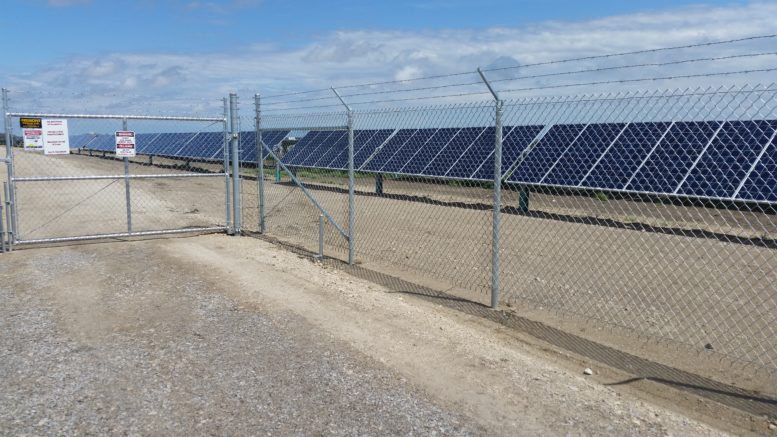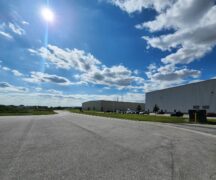By JAN LARSON McLAUGHLIN
BG Independent News
Bowling Green officials hope to save on mowing expenses and provide wildlife habitat all in one plan. Instead of mowing the open grassy areas surrounding the solar field on Carter Road, city officials are suggesting that the acreage become a pollinator habitat.
The Board of Public Utilities was presented with the proposal Monday evening by Brian O’Connell, director of public utilities for Bowling Green. While mowing the 12 acres around the solar field doesn’t require a lot of time, it is an expense the city could avoid, O’Connell said.
Daryl Stockburger, assistant utilities director, began looking for ways to reduce maintenance and enhance the solar site. He talked with representatives of the U.S. Fish & Wildlife Service about a grant to help convert the grassy areas into a pollinator habitat as part of the Great Lakes Restoration Initiative in the Maumee Area of Concern.
The habitat restoration would increase native habitat – such as vegetation, migratory birds and bees – and improve water quality in the watershed, O’Connell said.
An agreement would likely require a commitment by the city to allow the pollinator habitat to remain for possibly five to 10 years. That would not be a problem, O’Connell said, since the solar contract has a longer term and there are few options for the narrow strips of land outside the solar field.
It has been suggested that the Wood County Park District could maintain the habitat restoration area over the life of the grant. The project could provide educational opportunities for the park district, Bowling Green State University, Bowling Green City Schools, and the city.
The planting of the 12 acres, which are on the north and south sides of the solar field, would begin in 2018.
O’Connell explained that none of the plantings would grow tall enough to shade the solar panels.
The board of public utilities supported the proposal.
“Taking scrub land we have to cut, and planting flowers,” Matt Paquette said, sounded good to him.
Megan Newlove called the idea a “creative solution.”
According to the U.S. Fish & Wildlife Service, all non-native vegetation will be removed and replaced by native shrubs, grasses and wildflowers. The plants will provide foraging habitat for songbirds and pollinators like Monarch butterflies and bumblebees. The habitat is critical to brood rearing for migratory waterfowl, while reducing storm water runoff, standing water and erosion.
The project will directly address the loss of wildlife habitat for multiple species of native Ohio wildlife. Also, wind and water erosion and the amount of sediments entering the watershed will be reduced, and deep-rooted plants will remove nutrients that impact fish and macroinvertebrate populations.





